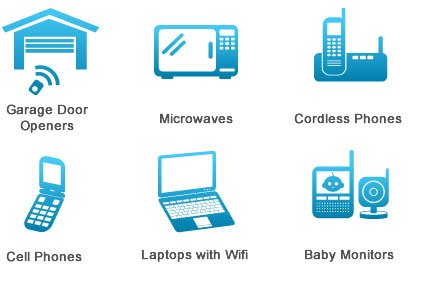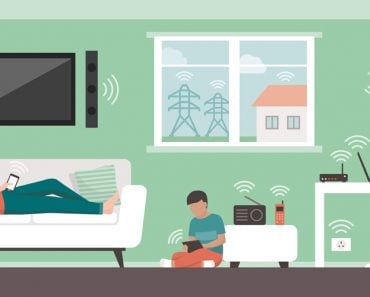Table of Contents (click to expand)
The main reason why electronic devices are banned during takeoff is because they emit radio waves, which can interfere with the communications of the airplane. This is a safety precaution to ensure that the airplane can communicate properly and avoid any potential hazards.
After finally maneuvering into our designated seats in an airplane, you will invariably hear the universal (and quite cliche) announcement come over the speakers. “Please turn off your mobile phones and other electronic equipments, as we are about to take off.” This is when people sulkily switch off their electronic devices and wait for the all-clear, which is usually once the plane is thousands of feet up in the air. However, there are always some exceptions, if you know what I mean. Did you know that Alec Baldwin, the famous Hollywood actor, was once asked to leave an airplane when he refused to switch off his phone because he was playing an online game?

Every time that dreaded announcement is made, I can’t stop from being curious… Why in the world do they want me to turn off my tablet? It’s not like I’m planning on making any phone calls during takeoff.
As it turns out, the decision to ban the use of cell phones and other electronic devices on airplanes relates to more than just a pointless debate between hazards and safety.
Recommended Video for you:
Electronic Devices Emit Radio Waves
When we look at aviation norms, they are essentially the same in almost every part of the world, and argue that the use of portable electronic devices is not allowed below approximately 3,000 meters (10,000 feet).

Electronic devices like smartphones, laptops, and iPads emit radio waves, which enable you to stay connected to the world (far below you) via the Internet. So what about that famous “Airplane Mode”? The answer is still no, according to the aviation regulations, which state that you are not supposed to use your smartphone, even if you are (quite unwillingly) putting your phone on “airplane mode”.
Electromagnetic interference is the main cause behind this strict regulation against portable electronic devices (PEDs) being used during takeoff. From a theoretical perspective, it is argued that radio transmitters (like mobile phones, gaming consoles, and so on) may interfere with the communication capabilities of the airplane and disturb the safety of the flight. This is not restricted to these devices, but seemingly harmless ones, like a Kindle, also emit radio waves, albeit at low power. These can also affect the communications of the airplane by interfering with the radio waves emitted by the aircraft to the ground. The radio waves emitted by such devices could theoretically impact vital systems, such as radar and collision avoidance technology. The problem is magnified if the gadgets are damaged and begin emitting stronger radio waves than they should, or if signals from multiple devices combine.
Why Do Radio Waves Interfere With Airplane Communications?
On a normal day, when using your smartphone within the confines of your room or from the porch outside (or anywhere practically), the radio waves that your phone emits don’t have any difficulty finding a network tower. They get hooked up to the one nearest your location, allowing a call (or a text, or an email) to be connected.
However, when you’re airborne, flying in an airplane that is moving at a high rate of speed, thousands of feet above the ground and thus far away from the network towers (which are essentially on the ground), things change dramatically. At any given moment, your smartphone has many different network towers to which it can connect. Therefore, both your cellphone and the network towers can become confused. This results in your phone emitting a stronger radiation than normal, which (theoretically) could interfere with the communications of an airplane.
Is The Caution Necessary?
If you are someone who always follows the rules, then you already know that in the U.S., Federal Communications Commission (FCC) regulations prohibit the use of mobile phones aboard an aircraft in flight. What’s more interesting to note is that the Federal Aviation Administration (FAA) does not actually prohibit the use of personal electronic devices (including cell phones) on aircraft. Also, there have been instances in the past when the use of electronic devices was allowed.
In 2008, Air France allowed the use of cell phones on board for sending messages, emails and even making calls! The demand for constant connectivity has also sparked competition among airline companies, which consequently pushes them to develop more advanced technologies that can safely allow the use of such devices to improve their passengers’ in-flight experience.
All things considered, it’s probably a good idea to keep your smart devices in your pocket (and turned off!) during a flight and simply enjoy the feeling of being thousands of feet above ground. Leave the digital world far behind and try to relax.
You are flying, after all!












